Text
Having FOMO over this year's cancelled tourism trade shows? New hi-tech virtual ‘travel show’ can fill the void
Courtesy of IOL Travel Reporter Jul 27, 2020
A new virtual meeting platform will connect Africa’s travel trade with global buyers following the cancellation of several African travel trade shows exhibitions this year due to the coronavirus pandemic.
OurAfrica.Travel 2020 replaces the industry’s traditional exhibitions, which are critical marketing, sales and networking tool for businesses in the travel and tourism sector.

The hi-tech virtual ‘travel show’ will take place over 16 days in August. It is scheduled within geographical regions to accommodate time zones.
In a press statement, the organisers revealed that OurAfrica.Travel will connect African suppliers such as hotels, lodges, activity operators and inbound operators with global buyers, via pre-scheduled one-on-one, face-to-face virtual meetings.
Co-founder Storm Napier said the team has been overwhelmed by the response from exhibitors and buyers since the launch earlier this month.
“OurAfrica.Travel is a new, affordable way to reignite and reunite Africa with the world and the reaction has been incredible. We now have over 150 exhibitors registered from countries across Africa," said Napier.
All participating exhibitors have invited their local and international buyer partners, including tour operators, travel agencies and Meetings, incentives, conferences and exhibitions (MICE) organisers who sell Africa.
Buyers participation in OurAfrica.Travel 2020 is free, easy and convenient. A buyer registers via a dedicated link, and once signed up they are admitted to the virtual platform and can begin networking with exhibitors.
Over 120 buyers have signed up to date.
The virtual travel show will accommodate buyers across different geographic regions and time zones. It will take place from August 11 to 13 (Australia, New Zealand and Asia Pacific between 2am to 10am CAT)
North America, South America and Canada show will take place over five days from August 17 to 21, from 4pm to 1am CAT.
Europe, United Kingdom, Ireland and Africa show will take place over five days from August 24 to 28 from 9am to 6pm CAT.
There will also be something called Global Saturdays that takes place on August 15, 22 and 29 from 9am to 6pm CAT.
Global Saturdays are open days that allow for the overflow of appointments that could not be accommodated within the exhibition schedule, and any buyer from anywhere may meet with any exhibitor, based on CAT.
Online diaries will open on August 1, 2020, when one can schedule 15-minute meetings.
"Attendance on the platform is monitored by organisers to ensure that confirmed meetings are honoured by both exhibitors and buyers. In addition, buyers can earn points, based on their interaction within the system, which allows them to win Golden
Ticket experiences in Africa," it revealed in its statement.
0 notes
Text
A sustainable future powered by the sea - Innovative Design leaves a legacy for development.
Innovative Design leaves a legacy for development.
A sustainable future powered by the sea
Innovative Design leaves a legacy for development.
Nico van Zyl
A durable and modern design
Turbine generating energy is certainly at the forefront of renewable energy, now more so than ever before on a global scale and probably the most cost-effective in the sector today. Dynamic material suppliers who are in their own right vibrant in design are producing better quality components contributing to a better end designed product, produced at lower cost and lasting exponentially longer. Logistically, replacing or repairing a large wind turbine situated in deep water can be extremely costly and time-consuming, not to mention the lasting impact it has on the marine environment during a maintenance routine task.
"Out of sight, out of mind"
There is also the concern that these pillars with rotating blades alienate beautiful scenes of nature due to their positioning in many contexts. There are many different opinions and emotions regarding turbine towers, however undeniably it must be developed further in order to assist in maintaining a new and more sustainable energy source for the present as well as the future. The resolution that may be to design a turbine that is submerged underwater capable of withstanding the forces of nature such as ocean conditions, outlast any former designed model, and performs overall better for decades at a time. This modern design may then just be the answer that many are looking for. Will it stand the test of time, likewise will it survive the critical minds of the more conservative? Undoubtedly though, a submerged turbine will surely go a long way in gaining support for the idea. After all, when out of sight, it is out of mind.
Innovation ensures longevity
Industry in energy is faced with a momentous task. Making resources last for generations to come is a million-piece puzzle! Ideally, the perfect solution would be the implementation of a particular unit that requires a once off approach, trustworthy enough to be left to its own devices and outlast supply needs. That is in the perfect world. However, innovative design and engineering must be the focal point in the objective to ensure consistency plus uninterrupted service in its purpose of existence. Making it last for as long as possible is key to survival. Tech graduates and current professionals are constantly collaborating creative ideas and thoughts to maximize the art of engineering, putting together technology in order to sustain its function and move forward with newer thought-provoking concepts with hope that it will catapult generations to come forward and out of the ever-increasing danger zone surrounding all of current populations groups, whilst sustaining the need for current demand and leave a legacy for the future. Innovation, intelligence, and transparency through sharing ideas globally throughout the industry will not only ensure longevity but impact hugely on sustainable development.
Less Scarring on the horizon
The fact is the majority of these turbines are situated in areas of natural beauty and is considered a menace rather than contributory. Largely due to the lack of understanding the concept by the general public. The mentally towards sustainable energy development is a testimony to the need for more educational motivated campaigning towards the benefits of turbine generated power. Consciously it is important to also consider the views and perspectives of local communities near turbine farms bearing in mind the investments, as well as social well-being in a common context is a fundamentally part of the dilemma that the sector is faced with. Point of the issue is then how do industry compromise or compensate in order to maintain the need for erecting turbine farms whilst at the same time tolerate somewhat negative influences from the populace? The mainstream answer to that question may just be to address the elephant in the room, the obvious scars on the horizon left by wind turbine farms that are hosting hundreds of turbine-like stems of dull steel flowers.
Ditch the wind farms in areas of concern along coastal regions and turn to wave generated turbine power. Submerge the turbine out of sight and glorify the concept! Maybe, maybe not! Inevitably this concept raises concern over the impact a submerged turbine might have on marine ecology. Nonetheless, it is a move forward, or is it?
CONCLUSION
We are by no means out of trouble, but ideas in an enterprise such as this form integral part of the sustainable development and is a spark for the fuel on the fire for further innovation. The turbines themselves are built to withstand the forces thrust upon them during harsh wave conditions as well as extreme weather, such as a typhoon. The blade design and materials are inspired by dolphin fins, they are flexible and thus able to release stress rather than remain rigid and risk breakage. The supporting structure is also flexible, "like a flower. The stem of a flower bends back against the wind," and so, too, do the turbines bend along their anchoring axes. They are also built to be safe for surrounding marine life, the blades rotate at a carefully calculated speed that allows creatures caught among them to escape. The designer Professor Shintake says. "I hope these [turbines] will be working hard quietly, and nicely, on each beach on which they have been installed out of sight and out of mind." Time will tell!
0 notes
Link
The blades of this five-blade turbine are made of a soft material and they rotate on their axis when influenced by ocean waves -- the diameter of the turbine is about 0.7 meters. The axis is attached to a permanent magnet electric generator, which is the part of the turbine that transforms the ocean wave energy into usable electricity. The ceramic mechanical seal protects the electrical components inside of the body from any saltwater leakage. This design allows the turbine to function for ten years before it needs replacing.Credit: Okinawa Institute of Science and Technology Graduate University (OIST), Quantum Wave Microscopy Unit
0 notes
Photo

The Rhino Ranger turned 6 today!
0 notes
Text
A PROJECT OF HOPE FOR THE RHINOS OF SOUTHERN AFRICA
The inspiration for Rhinos Without Borders is a response to the dire situation that is facing rhinos in Africa. With rhino poaching at an all-time high, concerned conservationists need to be proactive.
Great Plains Conservation and andBeyond, two leading conservation and tourism companies, have teamed up to translocate 100 rhinos from South Africa to safe havens in Botswana.
http://www.rhinoswithoutborders.com/?utm_source=HomePageBanner&utm_medium=BannerRhinosWithoutBorders&utm_campaign=BannerRhinosWithoutBorders
0 notes
Text
London continues to record strong tourism growth
London continued to welcome record numbers of international tourists to the city between July and September last year.
More than 5.2 million visits to the capital according to the latest data from the Office for National Statistics International Passenger Survey.
The rise in the number of visits represents an increase of 5.9 per cent measured against the same period in 2014.
The capital has seen a 22.5 per cent increase in the number of international trips to the city from 2009-14.
The increase in visits to London is also reflected in figures showing the number of tourists to the UK.
0 notes
Text
Good News at Last!!!!
Rhino horn demand in Vietnam drops by more than 33% in one year
Information campaign successfully changes minds of people who think rhino horn has medicinal value
Efforts to curb the deadly trade in rhino horn appear to be gaining traction, with a poll finding that demand for the animal part in Vietnam has dropped by more than a third over the past year.
After a year-long public information campaign in Vietnam, only 2.6% of people in the Asian country now continue to buy and use rhino horn, a decrease of 38%.
Importantly, there has been a 25% decrease in the number of people who think rhino horn, which is made of the same material as fingernails and hair, has medicinal value. However, 38% of Vietnamese still think it can treat diseases such as cancer and rheumatism.
The polling was conducted by Nielsen for the Humane Society International (HSI) and the Vietnam Convention on International Trade in Endangered Species of Wild Fauna and Flora (Cites).
Vietnam is a key market for the trade of rhino horn, which prompted the awareness campaign to try to deter people from buying and consuming it.
Demand for rhino horn, primarily in China and south-east Asia, is putting severe pressure on rhino numbers in Africa. Last year a record 1,004 rhinos were illegally poached in South Africa, which has more rhinos than any other country. Another 821 have been killed this year.
This explosion in poaching is relatively recent – only 13 rhinos were poached in South Africa in 2007. A key reason for this is the soaring price of rhino horn: it can reach $100,000 a kilogram on the black market, rivalling the price of cocaine and gold.
The public information campaign has focused on dispelling the myth that rhino horn has medicinal value. The campaign has been centred on Hanoi, Vietnam’s capital, through business, university, school and women’s groups.
Advertisement
Advertisements have appeared on buses and billboards, and an HSI book called I’m a Little Rhino has been distributed in schools.
The drive has been supported by other international efforts. Businesswoman Lynn Johnson, an Australian with no previous conservation experience, recently raised money to launch a series of advertisements in Vietnam that warn people rhino horn is harmful to them and is a bad choice as a status symbol.
“The messaging has gone up significantly in Vietnam over the past year which is fantastic,” Johnson said. “Our campaign targets the users directly but overall the amount of information aimed at Vietnamese has increased markedly.”
Teresa Telecky, director of wildlife at HSI, said it is crucial to reduce demand for rhino horn.
“These poll results demonstrate that, even in a relatively short period of time, our demand reduction campaign has succeeded in significantly and dramatically altering public perception and influenced behaviour,” she said. “The results offer a vital ray of hope for the survival of rhinos.”
Do Quang Tung, director of the Vietnam CITES management authority, said: “The demand for rhino horns by just a small proportion of people in Vietnam has not only damaged the position of Vietnam in international forums but also leveraged the poaching of rhinos.”
0 notes
Photo

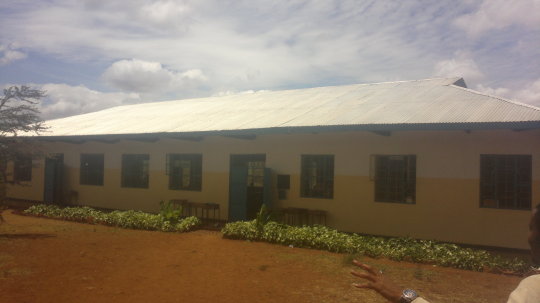


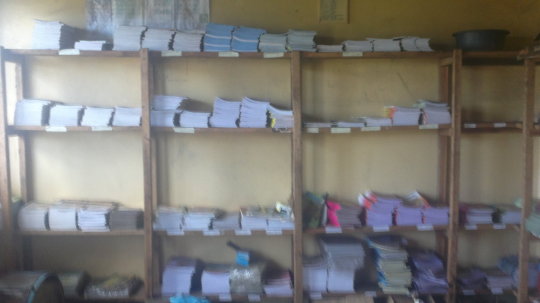

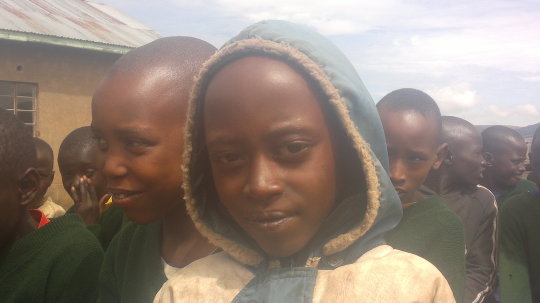
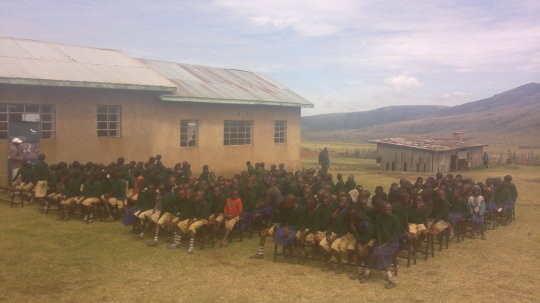
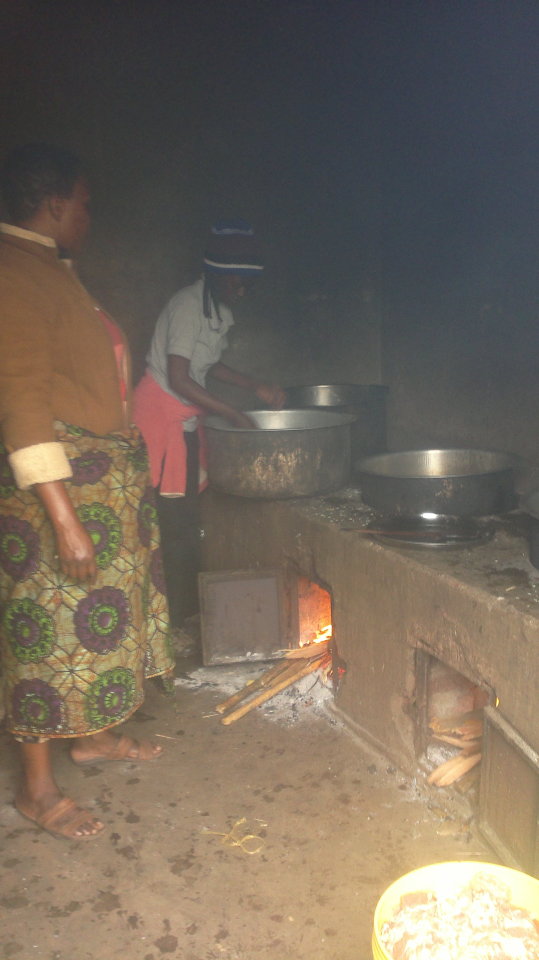
Working with local communities surrounding parks and reserves is not something new to me. In previous companies our influence and contributions were a lot more focused on conservation issues and emphasis was placed on animal welfare. It is therefore refreshing to be involved with an organization that actually give back to the people and take corporate social responsibility very seriously.
My introduction to the Ngorongoro communities was overwhelming in many ways. In certain aspects it is a vastly different approach. The future of sustainable conservation and eco-tourism rest in the hands of today’s youth and therefore education plays a major role. Being able to visit the local school in true rural Africa, touches the human heart in so many different ways. When you observe and feel the appreciation at ground level, you are automatically triggered by disposition to do more to help.
So it is an honor and great pleasure to look forward to working with the team and hopefully make a difference in people’s life’s which will ultimately contribute towards saving our wildlife and eco systems.
0 notes
Text
Wapikka - Vote at http://www.virginmediabusiness.co.uk/pitch-to-rich/start-up/wapikka/
A very worthy cause and great Idea!!
https://youtu.be/Dsgjkjpbi-s
0 notes
Text
Arlie Sisson joins Conde Nast
Magazine publisher Condé Nast is hiring a new vice president to run its emerging products group — Arlie Sisson, who’s joining from Starwood Hotels and Resorts.

Sisson led Starwood’s strategy for native apps on mobile, and before that, worked at mobile startup Silver Chalice New Media.
Fred Santarpia, who became Condé’s chief digital officer last fall, told me that the emerging products group is itself a new creation. Condé’s various titles (including The New Yorker, Wired, and Vogue) have their own digital teams, but Santarpia suggested that they’re “very much focused on running their day-to-day businesses.”
Sisson’s team, on the other hand, will be “singularly focused on innovating for the company’s future.” For now, at least, that means experimenting with different kinds of mobile apps.
“We’re looking at how fragmented the media landscape is, the many different platforms that our content can find a home on and many different form factors,” Santarpia added. “Who knows what’s next? Maybe what’s next is virtual reality — I don’t know the answers, but I do know that really smart people at Condé Nast are thinking about the marketplace and how to position our brands.”
Sisson is scheduled to start work on May 4.
“The momentum and growth in the digital landscape is unlimited and connecting people to products is more important than ever before,” she said in the hiring release. “Joining the incredible talent at Condé Nast gives me the opportunity to work with its extraordinary brands to engage more audiences in more dynamic ways on more digital and mobile platforms.
0 notes
Text
Indaba looking strong and growing
Indaba exhibitors up, hosted buyers doubled
Its fantastic news for Durban and tourism in general.

Credit: South African Tourism Exhibitors at Indaba showcasing their offering.

Exhibitor applications for this year’s Indaba are up 30% compared with 2014, while the number of approved hosted buyers has doubled compared with last year, according to South African Tourism. Approved non-hosted buyer applications are on a par with 2014.
SA Tourism says more than 80% of tradeshow floor space in the Inkosi Albert Luthuli International Convention Centre in Durban has already been allocated to exhibitors, while both halls of the Durban Exhibition Centre are close to 100% full.
Exhibitors include The Blue Train; the Vineyard Hotel; The Saxon Hotel, Villas and Spa; Tsogo Sun; the Protea Hotel Group; MalaMala Game Reserve; &Beyond Group; Bill Harrop’s Original Balloon Safaris; the Mantis Collection; the Shamwari Group; Fugitives’ Drift; Groot Constantia; Grootbos; Hilton Worldwide; Legacy Lodges and Resorts; the Lord Charles Hotel; Red Carnation Hotels; Sabi Game Reserve; and the Thornybush Collection.
In total, the applications of 1 166 non-hosted buyers had been approved by the beginning of April, with more applications coming in. Hosted buyer applications grew 75% to 737 buyers, with 100% growth in the number of approvals. There is roughly a 50/50 split of local and international buyers attending the show,
Indaba 2015 takes place at the Inkosi Albert Luthuli International Convention Centre from May 9 to 11. For more information or to register to attend or exhibit, click
- See more at: http://www.tourismupdate.co.za/Home/Detail?articleId=49362#sthash.Ho6wCSuP.dpuf
0 notes
Text
A trip to South Africa is not complete without a wine tasting
7 of the best wineries in South Africa
By Matthew Coe on Apr 02, 2015 in Africa, Food and Drink, Regions, South Africa, Travel Miscellany A Luxury Travel Blog,
South Africa is renowned for its verdant Winelands, where a host of wineries produce some of the world’s greatest produce. If you are planning a trip to South Africa, visiting a quintessential winery should definitely be on your to-do list. But where are the best wineries, and which are worth seeing? We’ve compiled a list of the Best Wineries in South Africa, so you won’t have to waste a moment in your search for the perfect glass of wine. Cheers!

Vrede en Lust
Dating back to 1688, the Vrede en Lust winery has had years to perfect its construction of fine wines. Located in the heart of the Cape Winelands, this modern farm establishment rests on a foundation that is more than 300 years old. Vrede en Lust produces red, white and rose wines, which guests can sample on a wine tasting activity day or as they stay in the winery’s luxurious accommodation.
Maison Estate
Maison Estate is a relatively modern winery located in the Valley of the Huguenots, and has won various awards for its fragrant and delicious wines. You can sample the estate’s produce at a wine tasting or even at your own wedding, as they offer luxurious event facilities. There is also an impressive tasting room and deli for you to feast in: your taste buds won’t know what hit them.
Rustenburg
Located in Stellenbosch, Rustenburg boasts stunning landscapes as well as delicious produce. Each bottle of wine has been aged to perfection, with the utmost care taken to perfectly preserve its array of flavours. Rustenburg is open seven days a week, where visitors are welcome to partake in wine tasting events and learn more about this fine estate.
Cederberg
Having won multiple awards for their wines, it’s no surprise that Cederberg is considered one of the greatest wineries in South Africa. Cederberg also takes great pride in its conservation work and biodiversity, with the winery being involved in various projects and initiatives to benefit the surrounding community and environment.
Boekenhoutskloof
First established in 1776, the homestead and vineyard of Boekenhoutskloof is still at the forefront of winemaking today. Located in Franschhoek Valley, the winery enjoys both stunning surroundings and an environment conducive to producing the world’s finest wines. A visit to the winery is guaranteed to delight all of your senses, particularly your taste buds.
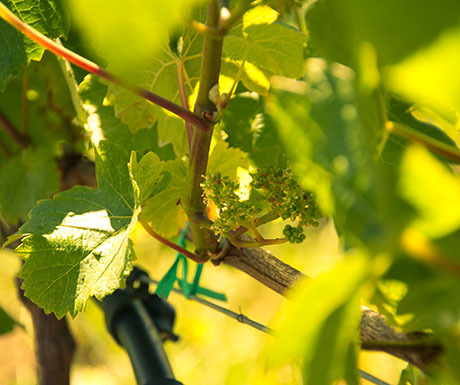
Lammershoek
This family-owned and run vineyard in Swartland is committed to creating wine which aptly reflects South Africa. Vibrant colours clash with bold flavours, resulting in some of the world’s most celebrated wines. But don’t just take our word for it: Lammershoek hosts wine tastings, where visitors are invited to sample many of the estate’s offerings.
Tokara Estates
Situated in Stellenbosch, Tokara Estates specialises in making its own olive oils, deli items and of course delicious wines. You are welcome to feast upon all of these masterpieces at the estate, including its own restaurant, which is also home to breath-taking surroundings and a knowledgeable team of winemakers.
Matthew Coe is Online Marketing Manager for Wanderforth.

0 notes
Text
Photograph of the week: Tropical bliss in Zanzibar
Thank you to Helen Suk of Not Without My Passport
& A Luxury Travel Blog
It was a tranquil, sun-drenched afternoon when this photo was captured at Nungwi Beach Hotel in Zanzibar. Below the wooden staircase was tropical bliss: the white-sand beach was undisturbed, the ocean a pristine, aqua blue. The scene embodies the exotic beauty for which Zanzibar is known.
By Paul Johnson on Apr 08, 2015 in Africa, Regions, Tanzania

0 notes
Text
A shame over Easter
Although this is content completely of the beaten track of normal tourism I do feel obligated to promote this article. However a bigger shame is the fact that the UK and USA just seem to be shrugging their shoulders in the matter and not doing anything about eradicating the problem....or do they just not have a clue?
Courtesy of BBC London
Archbishop of Canterbury's Easter sermon focuses on persecution
Christians should resist persecution without using violence, the Archbishop of Canterbury Justin Welby has said in his Easter Sunday sermon.

In his Canterbury Cathedral sermon, he spoke of the 148 victims of a Kenyan university attack last week and Coptic Christians killed in Libya in February.
The Queen, Prince Philip, and members of the Royal Family attended an Easter service at Windsor Castle.
In his message, Pope Francis called for peace "above all" in Syria and Iraq.
In his Easter "Urbi et Orbi" message, the Pope prayed for the students killed in Garissa in Kenya and called for more action to halt what he said was a "humanitarian tragedy" in Syria and Iraq.
The Pope "implored" peace in Libya, calling for the "absurd bloodshed and all barbarous acts of violence" in the country to end.
"We ask for peace, above all, for Syria and Iraq, that the roar of arms may cease and that peaceful relations may be restored among the various groups which make up those beloved countries," he told crowds in St Peter's Square.

Three days of national mourning are being held in Kenya for nearly one hundred and fifty people, many of them Christian, who were killed by Islamist militants last week.
In February, 22 Egyptian Coptic Christians were beheaded by Islamic State (IS) militants in Libya.
Analysis
Caroline Wyatt, BBC religious affairs correspondent
It is an Easter of suffering for many Christians around the world, a fact highlighted by the Pope and the Archbishop of Canterbury, as well as the Archbishop of York, in their Easter homilies.
Much of the news in the months leading up to Easter 2015 has been dominated by the killing of Christians, most recently the students in Kenya - many explicitly because they were Christian - and earlier in Libya, Syria and Iraq by Islamic State (IS) militants, who appear determined to drive those of other faiths from the areas they control, including other Muslims who do not subscribe to their extreme interpretation of Islam.
There is growing concern among Christian leaders over the murder of Christians by Islamist militants in many parts of the world, as the ideology of IS, Boko Haram and al Shabab and others spreads its message of death and hatred.
While the Pope and the archbishop have called on Christians to listen to the Easter message of the risen Christ today and forgive their persecutors, Pope Francis has made it clear for some time that he believes military force is justified to halt the advance of IS militants.
Christian support
The three main UK party leaders also highlighted the persecution of Christians abroad as they took a break from election campaigning to mark Easter.
Prime Minister David Cameron, who attended a church service in Oxfordshire, said it was "shocking" to know people abroad were still being "threatened, tortured - even killed" because of their faith.
Labour leader Ed Miliband said Christians were the victims of religious discrimination in the world, saying "our hearts go out to those who face difficult times both overseas and closer to home".
In a message on Twitter, Liberal Democrat leader Nick Clegg wrote of the "cruel and barbaric killings that took place in Kenya".
The Archbishop of Canterbury said Christians must support persecuted communities, with "love and goodness and generosity".
He spoke of the need for all Christians to bear witness to Jesus Christ and the resurrection and stated that age, gender, politics and sexuality were irrelevant.
"Witnesses are those people who know Christ - lay or ordained, old or young, gender, politics, sexuality or whatever irrelevant - all are equally witnesses. To witness is to be a martyr," he said.
The archbishop continued: "I am told by the Coptic Bishop in England that the Coptic Christians murdered in Libya last month died proclaiming that Jesus Christ is Lord.
"They are martyrs, a word that means both one that dies for their faith and one that witnesses to faith.
"There have been so many martyrs in the last year. On Maundy Thursday, three days ago, around 150 Kenyans were killed because of being Christian.
"They are witnesses, unwilling, unjustly, wickedly, and they are martyrs in both senses of the word."
This view was echoed by the Archbishop of York, Dr John Sentamu, who said that Christians were at greater risk in many parts of the world because "they follow Jesus Christ".
In an article in the Mail on Sunday he also urged Christians to be politically involved, calling on people to "engage and vote."
0 notes
Text
Off-the-grid, remote travel destinations
By
Paul Johnson
RESOURCE

What could be more luxurious than chartering a jet to the world’s most untainted stretches of land, only accessible once you’ve touched down at the nearest airfield or airport? Once you’ve touched down, you might need some guidance – a boat ride or some other form of overland transport to arrive at your predetermined destination. To get the full experience, it’s always best to have a local with you that can walk, sail or drive you through the various secluded spots and show you all the hidden gems that are waiting to be discovered.
Today, Air Charter Service walks you through three secluded, off-the-grid travel destinations. Sometimes, the only thing that can shake off the hustle, bustle and grunge of city life is an escape to a secluded resort with untouched sites for some much needed R&R (rest and relaxation).
With touch down in one of the world’s largest offshore financial hubs, the Cayman Islands’ smallest stretch of land “Little Cayman” and then move onto the majestic setting of the Channel Islands’ “Sark Island”. Our final stop lies on the south-west coast of North Africa to behold one of the wildest idyllic beaches, Guelmim’s Tan Tan Plage Blanche.
Little Cayman, Cayman Islands
The Cayman Islands are often spoken of in hushed tones, with a lot of emphasis on the role that it plays as one of the of the world’s largest offshore financial centres. Yet, bet you didn’t know that its sister island, Little Cayman, is a paradise all on its own.
With less than 170 people making up the population, Little Cayman is by far the most remote of the three stretches of land that make up the Cayman Islands – making it the epitome of tranquillity. With absolutely no need to worry about being bothered by masses of people, you’re more likely to encounter the many wild species which inhabit the land – whether it’s the wild bird species or different iguanas.
If your idea of the perfect holiday encompasses top class scuba diving, remote hiking trails, a gloriously quiet atmosphere, deep sea diving, kayaking or fishing, allowing you to take in natures various miracles; Little Cayman is ready and waiting with an unspoiled setting for you to experience and enjoy. Little Cayman has a range of hidden treasures just waiting to be discovered.
Prime scuba diving spots include Bloody Bay and Jackson’s Bight, located north of the island. Nominated as the world’s best spot for scuba diving time and time again, if water sports are one of your many fancies, exploring Little Cayman should be next in line on your bucket list.
In as far as remote travel destinations go; Little Cayman is a worthy choice.
How to get there
Flight check: Charter a private jet, book a flight.
Boat trips from Great Cayman, will need to be arranged to Little Cayman.
The Channel Islands’ Sark Island
Voted as one of Travel National Geographic’s best trips in 2015, it’s easy to comprehend why the beautiful Sark Island, made it onto this remote destination travel list.
Crowned the ‘Jewel of the Channel Islands’ Sark much like Little Cayman has been marked as the smallest of the Channel Islands. For a picturesque, historically and culturally enriching experience, Sark Island would definitely be worth consideration when planning your next remote travel experience. Though flights only land in the neighbouring mainland of Guernsey and Jersey, you can take a ferry or boat trip out to Sark Island. With only a few cars to be seen on the roads, most of your travel on Sark Island will be on foot or by carriage. With a general population of approximately 600 people, you’ll be provided with the luxury of being less accosted by tourists than if you were to travel to the more populous regions.
For beauty without measure, lose the dregs of city life with just one visit to this off-the-grid destination and embrace its breath-taking views. It has its fair share of luxury, whether you book in at the family owned Stocks Hotel or opt for a B&B stay. However small this island might be, it still has opulent accommodation and dining facilities – with spectacular views and mountainous regions waiting to be explored. The island also has a wealth of history to be discovered: from carriage rides, magnificent gardens, adventurous boat trips, galleries, down to handmade chocolates. With so many things to do – Sark Island is not to be underestimated.
How to get there
Fly to Guernsey, or Jersey by jet charter.
Upon arrival you will need to arrange the relevant boat service to whisk you off to Sark Island, whether you opt for a ferry ride via the Sark Shipping Company or opt for a more bespoke boat experience.
Plage Blanche, Morocco
The south coast of Morocco rarely gets the attention that it deserves, with tourists more likely to flock to the more popular Marrakesh, Fes and Casablanca areas.
However, on the south west of Morocco just outside the village of Guelmim, known as the Gateway to the Sahara, lies a white beach (Plage Blanche) cited as one of the most extraordinary, untainted and secluded beaches in Morocco. Those that have made the trip have been left awe inspired by the magnificence of this remote beach and its rustic, untouched splendour. The standard way of accessing this beach would be to fly into Guelmim and arrange an overland drive to the idyllic beach. The surf’s always up at La Plage Blanche. Wave hunters stand on your guard, as this white beach is known as a hot spot for those wishing to catch a wave or two. The waves are a prime spot for kite surfing too, especially if you get tired of lazing in the sun.
You could also just take a dip in the crystal-clear waters and familiarise yourself with the local fishing community, who will be more than likely to lead you in the direction of the land’s greatest treasures.
How to get there
Charter a private jet to Plage Blanche Tan Tan or Agadir Al Massira airport.
Overland driving to the Plage Blanche – 40km outside of Guelmim.
Arrange for accommodation in Guelmim or in one of the neighbouring cities.
That pretty much wraps up ACS’s most extraordinary remote destinations to add to your travel itinerary. The selected spots are just a few of the many remote travel destinations that are waiting to be explored. They may lead you to roads less travelled; but that’s just the point – is it not? Off-the-grid and out-of-this-world experiences – all with the promise of a more exclusive travel experience.
0 notes
Text
A bucket list of towns in South Africa
The 25 best small towns in South Africa
Posted on
February 27, 2015
by
Wesley
Sometimes you find yourself in the middle of nowhere. And sometimes, in the middle of nowhere, you find yourself.
Here are, in alphabetical order, the 25 best small towns in South Africa:
1. Clanwilliam
Image Source
With the picturesque Clanwilliam and Bulshoek dams and the spectacular Cederberg mountains in the area, this town offers the perfect weekend getaway. Two hours’ drive from Cape Town, the town is the perfect base from which to explore the surrounding area, including the magnificent, but secluded Biedouw Valley.
Things to do
The Lotz-Inn house on Bulshoek farm
The Biedouw Valley
The Kagga Kamma cave hotel
2. Clarens
Image Source
Dubbed “the jewel of the Free State”, Clarens is a haven for artistic and food-loving types. Nestled in the foothills of the Maluti mountains and a stone’s throw from Golden Gate National Park, which lies on the border between the Free State, Kwa-Zulu Natal and the mountain kingdom of Lesotho, Clarens would be a serious contender for the title of “South Africa’s favourite town”.
Things to do
Clementine’s restaurant
Golden Gate National Park
Clarens Brewery
3. Coffee Bay
Image Source
It may be a stretch to classify Coffee Bay as a “town” (it is tiny), but our list would not be complete without it. Nguni cattle graze freely on rolling green hills which abruptly end to meet the ocean. Coffee Bay is located on the “Wild Coast”, which is completely untouched by industrial development and breathtakingly beautiful. The Hole in the Wall is one of South Africa’s most famous tourist attractions and Mdumbi beach has been voted one of South Africa’s best beaches.
Things to do
Hole in the wall
Ocean-side sunrises
Mdumbi Beach
4. Dullstroom
Image Source
Fresh air, tranquility, magnificent scenery and the unofficial title as South Africa’s premier flyfishing destination make this village the perfect getaway and a shoo-in on our list.
Things to do
Fly fishing
Whisky tasting
The Anvil Ale House
5. Franschhoek
Image Source
Known as the good food and wine capital of South Africa, this scenic gem never disappoints. Its dramatic mountains, fusion of French and Dutch architecture and laid-back atmosphere has visitors returning time-and-time again.
Things to do
The Tasting Room restaurant at Le Quartier Français
Haute Cabrière wine farm
Breakfast at the Mont Rochelle Hotel
6. Gariepdam
Image Source
Many motorists travelling through the Free State pass this gem by without giving it a second thought, but anyone who has woken up to the sunrise from the De Stijl hotel, which overlooks the dam, will forever understand why this inconspicuous village made our list. The many islands and bays are reminiscent of a Mediterranean archipelago, made all the more spectacular against the backdrop of the Free State’s plains.
Things to do
The de Stijl Gariep hotel.
The tigers of Tiger Canyons
Go on a dam wall tour
7. Graaff-Reinet
Image Source
Graaff Reinet is South Africa’s fourth oldest town, and arguably one of its most beautifully-preserved. The hometown of one of South Africa’s greatest industrialists and philantropists, Anton Rupert, the town boasts leafy streets and a treasure trove of quaint restaurants and cafés. Camdeboo National park and the Valley of Desolation, just outside town, is a wonderland of scenic contrasts.
Things to do
The Polka Café
Camdeboo National Park
Graaff Reinet’s leafy streets
8. Greyton
Image Source
Little more than an hour’s drive from Cape Town is the picturesque village of Greyton. Founded in 1854, visitors can unwind and step back in time as they stroll through the village’s oak-lined lanes, past free-roaming cows and donkeys. Calming scenic beauty coupled with excellent restaurants and cafés make Greyton a favourite on our list.
Things to do
The Rock Pools
Searle’s trading post
The Saturday Greyton market
9. Hogsback
Image Source
Legend has it that Hogsback was the inspiration for the worlds J.R.R. Tolkien created in his “Lord of the Rings” and “The Hobbit” books. There is something undoubtedly magical about this village. The road leading to it winds steeply through lush green forests until the small town reveals itself perched atop the Amathole mountains. With regular snowfall in winter and its pristine forests, the town of Hogsback can confidently claim to be one of the most picturesque towns in South Africa, if not the world.
Things to do
The Enchanted Forest
The Bath at the end of the world
The 39 steps waterfall
10. Kakamas
Image Source
Vineyards stretch as far as the eye can see and line the majestic Orange river as it works its way through the town of Kakamas. The abundance of water (thanks to the river and a labyrinth network of canals), grand-scale vineyards, deep-blue African skies, quiver trees, wide-open landscapes and starry nights all combine to create this gem in the Kalahari. Friendly, hospitable, down-to-earth people ensure that visitors are treated like royalty.
Things to do
The ‘Pienk Padstal’ landmark pit stop
Find a solitary Quiver tree
The Augrabies waterfall
11. Montagu
Image Source
At the foot of the Langeberg mountains on the eastern edge of the Cape Winelands, lies the charming village of Montagu. The town has an old-world charm, great restaurants, a vibrant Saturday market and superb guest accommodation which caters for every budget. Whether visiting for a weekend of fun with the kids, relaxing with friends or a romantic breakaway with a loved one, Montagu will not disappoint. Voted “Town of the year” by CapeInfo.com in 2012.
Things to do
Mountain hiking
Visit Montagu’s picturesque houses
Gaze into the endless night sky
12. Nieu-Bethesda
Image Source
This tiny village at the foot of the Sneeuberg is a favourite amongst artists and writers. The village gained popularity thanks to Athol Fugard’s acclaimed play, The Road to Mecca, which tells the story about the Owl House and Helen Martins, its reclusive and eccentric former inhabitant. One of the most interesting places in South Africa, if not the world.
Things to do
Visit the Owlhouse
Buy stuff
The Brewery
13. Nieuwoudtville
Image Source
Nieuwoudtville is known for the springtime bloom of wild flowers which results in explosions of vibrance of colour. However, this town is worth visiting all year round as it has all the natural beauty, peace, quiet and genuine hospitality anyone can ask for.
Things to do
The Flowers in Spring
Nieuwoudtville at dawn
The Nieuwoudtville waterfall
14. Nottingham Road
Image Source
In the rolling green hills of KwaZulu-Natal lies the charming village of Nottingham Road. An art-lover’s paradise, Nottingham Road has country charm and an abundance of natural scenic beauty. It lies at the heart of the Midlands Meander, where visitors are welcomed into the studios of some of South Africa’s best-known artists, craftsmen and sculptors. The site of Nelson Mandela’s capture, which eventually led to his 27-year imprisonment, is 30 minutes’ drive away.
Things to do
The Notties Brewery
Blueberry café
Do some fly fishing
15. Pilgrim’s Rest
Image Source
A living museum which offers an insight into the gold rush at the turn of the 20th century, the entire town has been declared a national monument. As much as the town itself is interesting and quirky (don’t miss the Royal Hotel’s Church bar, which was transported from Cape Town to Pilgrim’s rest, via Maputo, by sea and ox-wagon), the town is on Mpumalanga’s picturesque Panorama route, which boasts with some of the most majestic scenery on earth. Everyone should see the view from God’s Window at least once in their lives.
Things to do
God’s window
Robber’s Grave
The Royal Hotel
16. Port St. Johns
Image Source
Port St. Johns is touted as the “Jewel of the Wild Coast” on account of its subtropical climate and completely untainted natural environment. Similar to Coffee Bay, Port St. Johns is adorned by numerous secluded beaches and hectares of dense forest. This is rural Africa at its best.
Things to do
Check out the Umzimvubu river
The Gap and Blowhole
The Sardine Run
17. Prince Albert
Image Source
Prince Albert lies in a picturesque fertile valley on the edge of the great Karoo on the one side and the Swartberg mountains on the other. The legendary Showroom theatre, with its Art Deco architecture, attracts many well-known artists to the small town and visitors can choose from many good-quality restaurants, guest houses and art galleries. The spectacular Swartberg pass, one of the most dramatic and scenic mountain passes on earth, starts just outside town.
Things to do
Catch a show at The Showroom
The Swartberg pass between Prince Albert and Oudtshoorn
Take a dip in the Swartberg hotel pool
18. Riebeek-Kasteel
Image Source
Want a food and wine lover’s paradise in the Cape winelands without the crowds or exorbitant prices? Look no further than Riebeek-Kasteel. Try the French-Italian inspired country cuisine at Café Felix, the beautifully presented comfort food at Bar Bar Black Sheep Restaurant and a late afternoon gin and tonic on the verandah of the Royal Hotel.
Things to do
Café Felix
Bar Bar Black Sheep
Chill out on the verandah of the Royal Hotel
19. Sabie
Image Source
Sabie and its surrounds is a paradise for nature lovers and adventure seekers. Game viewing, hiking, fly fishing, white-water rafting, rock-climbing & abseiling are only some of the activities on offer. Add to that the majestic scenery on the Panorama route and the fact that day trips to the Kruger National Park can easily be made from town. Named “Town of the Year” by Rapport and Kwêla in 2012.
Things to do
Blyde River Canyon
Jessica the hippo
Bourke’s Luck Potholes
20. St. Lucia
Image Source
St. Lucia’s iSimangaliso Wetland Park became the first South African World Heritage Site in 1999. Wild and largely unspoilt (hippopotami roam the streets at night), nature lovers can marvel at the area’s large populations of hippos, crocodiles and other wildlife. Apart from the wetlands areas, the area also offers pristine beaches and sensational scuba diving.
Things to do
iSimangaliso wetland park
Cape Vidal
Sodwana
21. Sutherland
Image Source
Only a few hours’ drive from Cape Town is one of the coldest places in South Africa, Sutherland. As much as it may be known for its cold winters, it offers year-round warm hospitality, wide-open spaces, peace and quiet. With very little light pollution, it is known as the star-gazing capital of South Africa. Don’t miss the lamb shank at Cluster d’Hote restaurant.
Things to do
The South African Large Telescope (SALT) site
Cluster d’Hote restaurant
The Great Karoo’s legendary sunsets
22. Tulbagh
Image Source
Bordered by mountains on three sides and located in a fertile, serene, wine-producing valley, Tulbagh is a hidden gem. The town is one of South Africa’s oldest (the first farmers settled here in 1700) and in Church Street visitors will find the highest concentration of national monuments in the country (32). The nearby Matroosberg reserve is known for its snowfall during winter and Saronsberg Wine Estate produces some of South Africa’s best wines.
Things to do
Take a stroll down Church street
Saronsberg winery
The Belgian Kitchen
23. Underberg
Image Source
With the Sani Pass, the mountain kingdom of Lesotho and uKhahlamba/Drakensberg park (declared a World Heritage Site in 2000) on its doorstep, Underberg is known as the gateway to the southern Drakensberg. It is also a popular destination for fly-fishing.
Things to do
Travel up Sani Pass
Go tubing down the river
Shop around at Puckety Farm
24. Villiersdorp
Image Source
Located in a fertile valley cradled by mountains, the town of Villiersdorp is as charming as you’ll ever visit. The quiet streets are lined with storm water trenches and oak trees as well as beautifully maintained gardens and old houses, giving the town a lovely country feel. Getting there is a pleasure, with four spectacular mountain passes to choose from (The Franschhoek pass is particularly breathtaking). To top it all off, the nearby Theewaterskloof dam is a playground for watersports in summer.
Things to do
Hike in the mountains
Wander through the Canola fields
Have a picnic next to the dam
25. Wilderness
Image Source
The town of Wilderness encapsulates everything there is to love about the Garden Route – it has a long, white sandy beach and azure ocean; a wonderfully mild climate, lush forests, majestic mountains and a number of lakes, rivers and estuaries. The Garden Route National Park is beautifully maintained and offers excellent accommodation at a reasonable price.
0 notes
Text
South Africa the best Country for Trail Walking
20 Walks of freedom
In commemoration of the 20th anniversary of Nelson Mandela’s appointment as South Africa’s president, Fiona McIntosh has drawn up a shortlist of the country’s 20 best nature trails. Chosen from its well-established and wonderfully scenic network of routes that suit every level of ability, from hard-core backpacking to relaxed guided hikes, there’s bound to be at least one that will give your next safari a healthy, refreshing edge.
01 Drakensberg Grand Traverse
Traversing South Africa’s central mountain range, the mighty Drakensberg, is not for the faint-hearted. There are no paths, signposts, huts, shops or facilities of any kind on this rugged 3000metre-high mountain plateau. The weather is unpredictable and every day you’re subjected to seriously punishing climbs and descents. You’ll need to be fit, strong and totally self-sufficient. But don’t be put off – if you’re up to it, this mountain wilderness trail will refresh your soul.
From the start of the trail at the Sentinel car park in the Free State there’s a short, steep section of trail to the foot of the renowned double chain ladders. These give access to the top of the mighty natural fortress of the Drakensberg. Here the marked path ends and you’re on your own with only your wits, soaring lammergeyers (bearded vultures), skittish antelope and the occasional local herdsman for company. The scenery is breathtaking. Inscribing the uKhahlamba-Drakensberg Park to the list of World Heritage Sites in 2000, UNESCO recognised both the exceptional natural beauty and the diversity of habitats that protect a high level of endemic bird and plant species. This is a place where you can look down on soaring birds – a mountain refuge where the air is thin. It is a wonderland that is often sprinkled with snow, even in summer.
For the first few days you stay close to the edge of the Great Escarpment, known to the Zulu people as uKhahlamba, ‘Barrier of Spears’. This is the most dramatic section, so take time to enjoy the magnificent Thukela River as it cascades off the top of the famous Amphitheatre – a 5km-long, 1200metre-high sheer cliff face, bounded by the dramatic bookmarks of the Sentinel and Eastern Buttress, the jagged rock spires of the Mweni Needles and the deeply incised green valleys at the foot of the escarpment.
The classic north-south grand traverse to Bushman’s Nek, near Underberg in KwaZulu-Natal, includes bagging the range’s six highest peaks: Mont aux Sources (3283m), Cleft Peak (3281m), Champagne Castle (3377m) Mafadi (South Africa’s highest peak at 3450m), Giant’s Castle (3314m) and Lesotho’s Thabana Ntleyana (at 3482m the highest peak in southern Africa). Depending on your navigational skills and experience, you’ll cover between 210km and 250km over 10-12 days. Permits are issued on arrival at Sentinel car park. The final 10km of the approach road are very rough (a 4WD is a good idea) but Witsieshoek Mountain Resort, the nearest accommodation, will organise transfers if required.
Difficulty 5
www.witsieshoek.co.za
Alternative options
The Drakensberg Grand Traverse is extremely strenuous but there are easier alternatives. Peak High Mountaineering (www.peakhigh.co.za) and Spanafrican Adventures (www.spanafrican-adventures.co.za) offer guided and supported traverses as well as shorter sections such as the four-to five-day stretch between Sentinel and Cathedral Peak in the Northern ‘Berg – peaks that are also spectacular, but much more manageable. The three-day, 28km guided and fully-catered Ampitheatre Heritage Hike gives you a taste of what the mighty Drakensberg has to offer without having to lug a heavy pack. Moderately strenuous, largely because of the high altitude, it starts with a beautiful ridge walk to the superbly sited Witsieshoek Mountain Lodge, where you spend two nights, and ends with a beautiful walk down to one of the ‘Bergs’ nicest rest camps at Mahai. Day two will take your breath away. The walk past the daunting bulk of the Sentinel to the foot of the chain ladders, the vertiginous climb and the awe-inspiring views from the Mont-aux-Sources plateau south over almost the entire Drakensberg range will remain with you for years to come.
Difficulty 4
www.drakensberg-hikes.co.za/amphi-hike
The five-day, 60km Giant’s Cup Hiking trail, through the foothills of the Drakensberg from Sani Pass to Bushman’s Nek, is a great lower-level alternative. Daily distances are fairly short, the terrain is undulating yet varied. Eland and other antelope are often sighted and you overnight in comfortable huts, some of which have refreshing swimming holes.
Difficulty 3
www.kznwildlife.com/index.php/travel-information/wilderness-trails/gc-trail
02 Port St Johns to Coffee Bay Wild Coast hike
A marked hiking trail once ran for 280km along the Transkei Coast, the homeland of former president Nelson Mandela. Sadly, the huts have fallen into disrepair, but sections of this iconic route are still accessible to adventurous hikers willing to use local accommodation or carry tents. Wilderness it is not.
The area is dotted with rural settlements, but with its rolling green hills, deserted sandy beaches and smiling, colourful people, the rugged Wild Coast offers some of the finest hiking in the world. It’s also a wonderful cultural experience. You’ll be put up in clean rondavels (traditional thatched, one-roomed circular huts) and treated to local food and festivities. Hiring a guide enhances the experience and makes life easier, as the trail, which largely follows animal paths, is poorly marked and often cuts inland to avoid ravines.
The stretch from Port St Johns to Coffee Bay is the most spectacular, and combines a stout physical challenge with a fascinating window onto rural life. Assuming you don’t get too lost (and asking locals the way is part of the fun), the 40-mile trail will take five days.
Directions: Setting off from the laid-back town of Port St Johns, you climb up through the coastal forest of the Silaka Nature Reserve to views over the promontories and sandy bays that typify this weather-beaten coastline. Leaving the reserve, the trail cuts inland then descends steeply to the Umngazi River and the first of many river crossings. Catch the ferry from Umngazi River Bungalows and Spa (a great refreshment stop) and continue to the first overnight stop at Madakeni, around 13km from the trailhead. Here you will be hosted by the villagers and fed on local fare such as samp (mealie porridge) and beans or pap (ground corn) and sauce.
Day two takes you from Madakeni to Tsweleni. It is also 13km, but the undulating terrain makes it a tough haul. The rewards, however, are many. Not only is the scenery breathtaking, but the flora of the Transkei coast is extraordinary. Colourful ground orchids, daisies and everlastings nestle among the tough grasses. In winter, bright, red-spiked aloes cling to the rocky cliffs.
Wading the Mpande River is an intensestart to the 15km third day. Plan to cross the river at low tide, before continuing over rugged, rolling grasslands to Huleka Nature Reserve, a wonderful stretch of coastal forest fringing a picturesque bay where you may be treated to the classic Wild Coast scene of cattle strolling down the beach.
As you pass isolated huts on the hillsides, keep your eyes open for Abakthweta – young men with their faces painted in sacred white clay who are in the final stages of traditional coming-of-age initiation ceremonies. Check out the shebeen (local bar) at Huleka village before turning in.
The penultimate day, from Huleka to Mdumbi, is long, with numerous hills and rivers to cross. Thankfully, the final day’s hike is much easier, traversing dramatic cliffs, ambling down a long, empty beach, and crossing the Mthatha river mouth in a rather shaky local boat. It is a short walk, so you’ll be on the beach at the vibrant holiday village of Coffee Bay beach by lunchtime.
Before you start the final descent, sit for a while on the dramatic clifftop to enjoy one of the best views in the whole of South Africa and to reflect. Even on this short outing, you’ll have no doubt recognised that the grace, humility and sense of fun that we associated with Nelson Mandela lives on throughout his homeland.
Difficulty 4
www.wildcoasthikes.com
Alternative option
There are a number of more luxurious hikes in the southern part of the Wild Coast on which you overnight in upmarket hotels or B&Bs. The five-day Wild Coast Meander is South Africa’s first slackpacking trail – ‘slackpacking’ being hiking without a backpack, because someone else is taking care of it. The trail starts at Kob Inn and finishes at Morgan Bay, just south of the Kei River. It’s a magnificent walk on which gaggles of local women act as porters, carrying your bags. You can do it self-guided, but it’s worth hiring a local guide to learn something of Xhosa culture and to keep you on track! Take a bathing costume, diving mask and snorkel so that you can explore the wonderful rock pools.
Difficulty 3
www.wildcoastholidays.co.za
The best of the rest
03 Otter Trail
South Africa’s most popular multi-day hike, the 42km, five-day Otter Trail follows the incredibly scenic coastline of the Garden Route National Park. It’s tough, but the beautifully-located huts, rugged scenery, lush coastal forest and sense of isolation are ample reward.
Difficulty 5
www.sanparks.org/parks/garden_route
04 Hoerikwaggo Tented Classic
This spectacular five-day, 75km trail along the spine of the Cape Peninsula links two African icons – Cape Point and the City of Cape Town. From the top of Table Mountain it offers dramatic views of Robben Island, where Nelson Mandela was imprisoned for 18 years. Highlights include the ever-changing scenery and plains game sightings.
Difficulty 3 (with easier sections)
www.hoerikwaggotrails.co.za
05 Fynbos Trail
Slow down and smell the flowers on this three-day, 36km amble along the beaches and fynbos-covered hills of the Walker Bay Conservancy in the Southern Cape. Guided hikes with a botanist are available.
Difficulty 1
www.fynbostrail.co.za
06 Whale Trail
The five-day, 55km trail though the De Hoop reserve in the southern Cape – one of the eight protected areas of the Cape Floristic Region World Heritage Site – is an absolute gem. Short daily distances and optional bag transfers allow plenty of time to enjoy the wild flowers, fascinating rock pools, whales, rare birds, plains game and the divine overnight cottages.
Difficulty 4
www.capenature.co.za
07 Oystercatcher Trail
This trail was featured in the BBC’s Unforgettable Walks to Take Before You Die. It is a four-day 48km slackpacking trail along the rugged coastline and beaches of the Garden Route, which gives insight into the plight of the endangered African black oystercatcher. It includes an archaeologist-led tour to the Pinnacle Point caves, which reveal the earliest evidence of modern human behaviour.
Difficulty 2
www.oystercatchertrail.co.za
08 Cederberg Heritage Route
Explore the rugged, otherwise inaccessible Cederberg Wilderness area, admired for its jagged golden peaks, rock art and botanical diversity, on this four-day, 55km community-run trail, overnighting in mission villages.
Difficulty 4
www.cedheroute.co.za
09 Silver Sands Hiking Trail
Taking this guided, five-day, 55km hike along the wild coastline of Namaqualand is a wonderful way to appreciate the bizarre geology, marine life and spring flower displays in this inhospitable, remote section of corner of South Africa.
Difficulty 1
www.jacanacollection.co.za
10 Klipspringer Hiking Trail
Named after the cute little antelope that’s often seen along the way, this rugged, three-day, 33km trail through the Northern Cape’s starkly beautiful Augrabies Falls National Park, reveals the dramatic landscapes and bizarre flora of this semi-desert region in all its glory.
Difficulty 4
http://www.sanparks.org/docs/parks_augrabies/tourism/klipspringer_trail_brochure.pdf
11 Rim of Africa
The guided Rim of Africa hike traverses over 600km of rugged mountain terrain from the Cederberg to the Outeniqua mountains of the Cape Garden Route. Usually walked in sections, it takes several forms – guided hikes for the hard-core, Pack-Lite trails for those who prefer the slackpacking approach, and self-guided adventures on certain sections for those who prefer to go it alone.
Difficulty 3
www.rimofafrica.org
12 Tsitsikamma Trail
One of the most spectacular trails in the country, this strenuous, 61km, six-day hike through the Eastern Cape’s Tsitsikamma mountains is a magical journey through indigenous forest, misty mountain peaks and deep river gorges that are alive with birds and small game. The bag transfer option eases the load, but it’s still a tough hike that requires a high level of fitness and self-sufficiency.
Difficulty 5+
www.mtoecotourism.co.za/tsitsikama.htm
13 Mehloding Hiking Trail
Community-run, this four-day, 61km slackpacking trail through the remote mountainous foothills of the uKhahlamba-Drakensberg World Heritage Site takes in rock art sites and visits to local villages. It is as much a taste of local life as it is a spectacular walk.
Difficulty 5
www.mehloding.co.za
14 iMfolozi Wilderness Trails
Experience the freedom of the walking in the bush and sleeping out under the stars on these three- to five-day ranger-led wilderness trails through the Hluhluwe-iMfolozi Park, KwaZulu-Natal’s premier Big Five game reserve.
Difficulty 2
www.kznwildlife.com
15 Rhebok Hiking Trail
Towering burnt orange sandstone cliffs and towers are the main drawcards of this picturesque 28km overnight trail in the Free State’s Golden Gate Highlands National Park. Crystal-clear rock pools, diverse wildlife sightings and delicate wildflowers are among the other attractions.
Difficulty 4
www.sanparks.org/parks/golden_gate
16 Num Num Trail
Meandering up and down dramatic escarpments and through game-filled plains, this five-day, 36.5km trail showcases the lush indigenous forests, tumbling waterfalls, weather-sculpted landforms and wonderful birdlife of Mpumalanga. Superbly located and well-equipped huts are the cherry on the cake.
Difficulty 3
www.thenum-numtrail.co.za
17 Fanie Botha Trail
Laid out half a century ago as part of the National Hiking Way, this iconic trail in Mpumalanga is still one of the country’s finest. It is known for its beautiful views, spectacular swimming holes and abundant wildlife. The 52km, five-day Graskop route is the most challenging, but there are shorter, easier loops.
Difficulty 5
www.komatiecotourism.co.za
18 Magoebaskloof Hiking Trail
Immerse yourself in a Lord of the Rings-style forest full of chirping birds, bushbuck, samango monkeys and tinkling streams, on this 50km, three-day trail in Limpopo.
Difficulty 5
www.komatiecotourism.co.za
19 Stamvrug Hiking Trail
Outstanding views, plains game, indigenous forests and inviting rock pools are just a few of the attractions of this stunning two-day, 25km trail on a private nature reserve in Limpopo’s Waterberg Biosphere Reserve.
Difficulty 2
www.waterberg.co.za
20 Kruger Backpacking Trails
Hiking with big game is a thrill of note, and sleeping out in a flimsy tent in Big Five country even more so. On each of the four-day, backpacking trails in Kruger National Park – the Olifants, Mphongolo and Lonely Bull trails – you carry everything you need, but are led by a ranger. A quintessential African walk.
Difficulty 2
www.sanparks.org/parks/kruger/tourism/activities/
0 notes